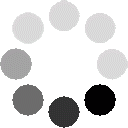Rights Contact Login For More Details
- Wiley
More About This Title Beginning CSS: Cascading Style Sheets for Web Design, 3rd Edition
- English
English
With the latest versions of Firefox, Safari, Internet Explorer, and other browsers released, CSS is more essential than ever. This beginner guide demonstrates how cascading style sheets can be used to define styles to items in Web pages, rather than format each item individually. Each lesson in this full-color book has been methodically revised to be more concise and efficient, making your learning experience as productive as possible.
- Covers the latest in CSS, including the new features of Internet Explorer, Firefox, Safari, and Google Chrome
- Reviews the vast improvements to mobile browsers and how CSS can work with them
- Provides helpful examples and walks you through real-world solutions to common hurdles
- Discusses embedded fonts, compatibility tables, and cross-browser bug scenarios
Beginning CSS, Third Edition gets you completely up to date so that you can start using CSS in the newest Web and mobile browsers today!
- English
English
Richard York is a web developer at Westlake Design, a web design and development firm, and an active contributing member of the PHP community. In addition to writing previous editions of Beginning CSS: Cascading Style Sheets for Web Design, he is also the author of Beginning JavaScript and CSS Development with jQuery.
- English
English
PART I: THE BASICS.
CHAPTER 1: INTRODUCING CASCADING STYLE SHEETS.
CHAPTER 2: THE BITS THAT MAKE UP A STYLE SHEET.
CHAPTER 3: SELECTORS.
CHAPTER 4: THE CASCADE AND INHERITANCE.
PART II: PROPERTIES.
CHAPTER 5: APPLYING FONT FACES.
CHAPTER 6: MANIPULATING THE DISPLAY OF TEXT.
CHAPTER 7: BACKGROUND COLORS AND IMAGES.
CHAPTER 8: THE BOX MODEL: CONTROLLING MARGINS, BORDERS, PADDING, WIDTH, AND HEIGHT.
CHAPTER 9: FLOATING AND VERTICAL ALIGNMENT.
CHAPTER 10: STYLING LISTS.
CHAPTER 11: POSITIONING.
CHAPTER 12: STYLING TABLES.
CHAPTER 13: CREATE A COMPLETE LAYOUT.
PART III: ADVANCED CSS AND ALTERNATIVE MEDIA.
CHAPTER 14: ADVANCED SELECTORS.
CHAPTER 15: STYLING FOR PRINT.
CHAPTER 16: CUSTOMIZING THE MOUSE CURSOR.
CHAPTER 17: CONTROLLING OPACITY AND VISIBILITY.
CHAPTER 18: STYLING CONTENT FOR MOBILE DEVICES.
CHAPTER 19: CLOSING COMMENTS.
APPENDIX A: ANSWERS TO EXERCISES.
APPENDIX B: ADDITIONAL CSS RESOURCES.
APPENDIX C: CSS REFERENCE.
APPENDIX D: CSS COLORS.
INDEX.

